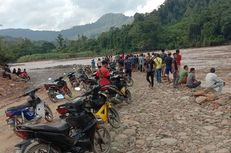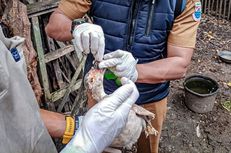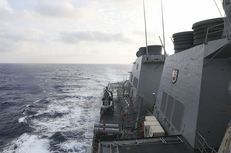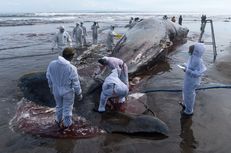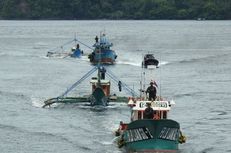Baca berita tanpa iklan. Gabung Kompas.com+
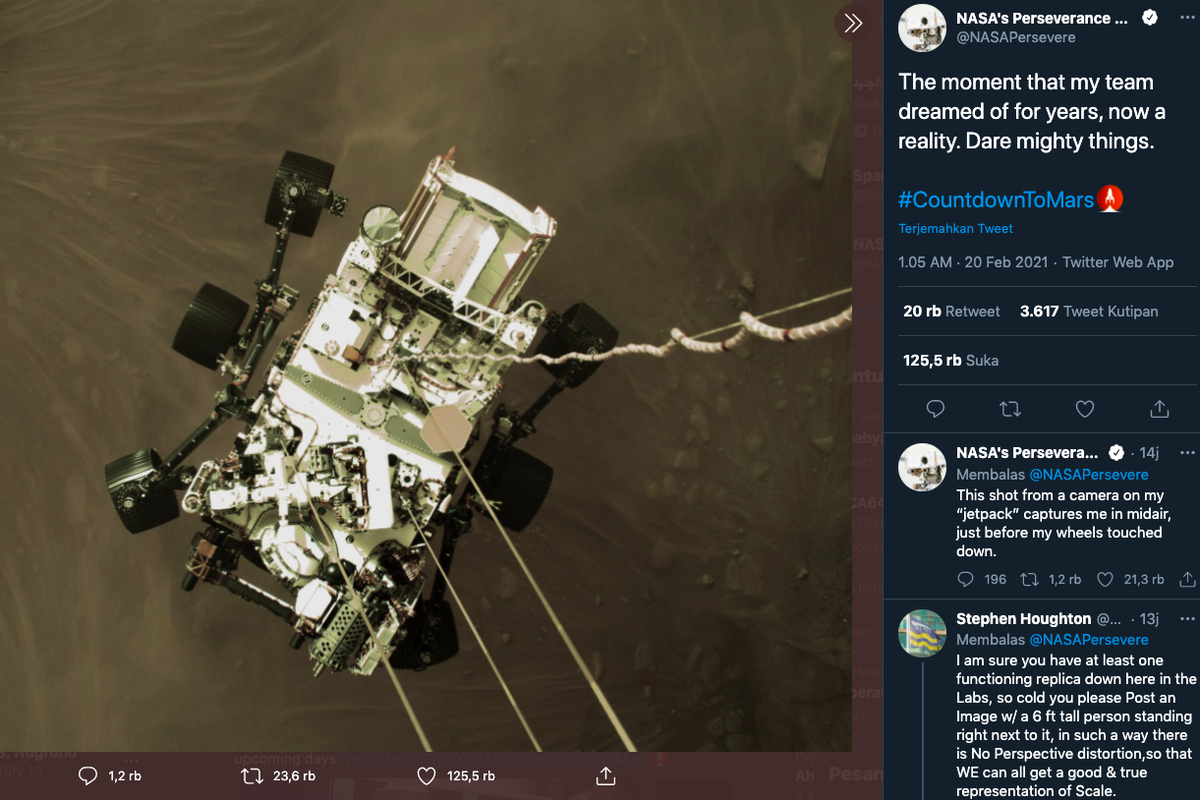
A screen grab of the NASA Perseverance rover lands on Mars on Thursday, February 18, 2021.
Writer Dezy Rosalia Piri
| Editor Dezy Rosalia Piri
Also read: Indonesian Economy Sinks to A Record Low of Minus 2.07%
The cameras allow the scientists and engineers to get an even better view of our neighboring planet than previous expeditions, but as they explained over a live broadcast, the signals sent from the control team to the rover can take between five and 20 minutes.
That means that the team has to send a series of instructions to Perseverance at the beginning of the day and wait a while to see what happens.
The mission aims to collect rock samples which will be collected by subsequent missions in cooperation with the European Space Agency (ESA).
It is hoped that Perseverance will pave the way for future human exploration of the red planet.
Simak breaking news dan berita pilihan kami langsung di ponselmu. Pilih saluran andalanmu akses berita Kompas.com WhatsApp Channel : https://www.whatsapp.com/channel/0029VaFPbedBPzjZrk13HO3D. Pastikan kamu sudah install aplikasi WhatsApp ya.
There are no comments
Comment wisely and responsibly. Comments are entirely the responsibility of the commentator as regulated in the ITE Law
Thank You! We have received your report. We will remove comments that conflict with the Community Guidelines and the ITE Law.
More Headlines
Business
August 25, 2023, 07.58 PM
Taiwan's Semiconductor Industry: A Rising Powerhouse with Global Impact
News
April 14, 2023, 11.48 AM
3 Malaysian Nationals Missing after Boat Capsizes Near Indonesia’s Side of Borneo
News
April 13, 2023, 01.56 PM
Indonesia to Deploy Warships during ASEAN Summit in East Nusa Tenggara
News
April 12, 2023, 02.32 PM
Jakarta High Court Rejects Appeal of Ex-Police General Ferdy Sambo Facing Death Sentence
News
April 11, 2023, 05.26 PM
Indonesia Religious School Principal Named Suspect in 14 Students' Sexual Abuse
Culture
April 8, 2023, 05.52 PM
Centuries-old Indonesian Easter Tradition Returns after Pandemic Hiatus
News
April 8, 2023, 05.35 PM
Access to ASEAN Air Transportation Drives Bali's Tourism, Says Statistics Indonesia
Baca berita tanpa iklan. Gabung Kompas.com+
Baca berita tanpa iklan. Gabung Kompas.com+
IN CASE YOU MISSED
Baca berita tanpa iklan. Gabung Kompas.com+
Baca berita tanpa iklan. Gabung Kompas.com+








